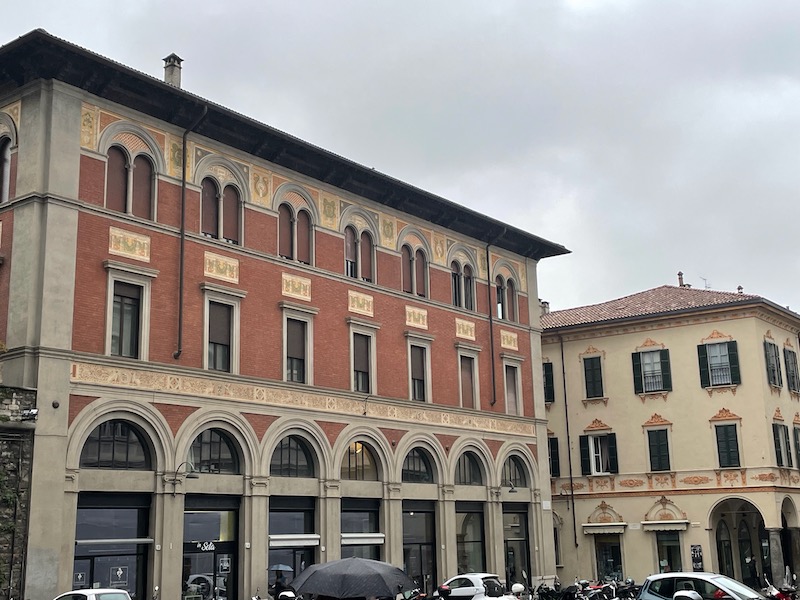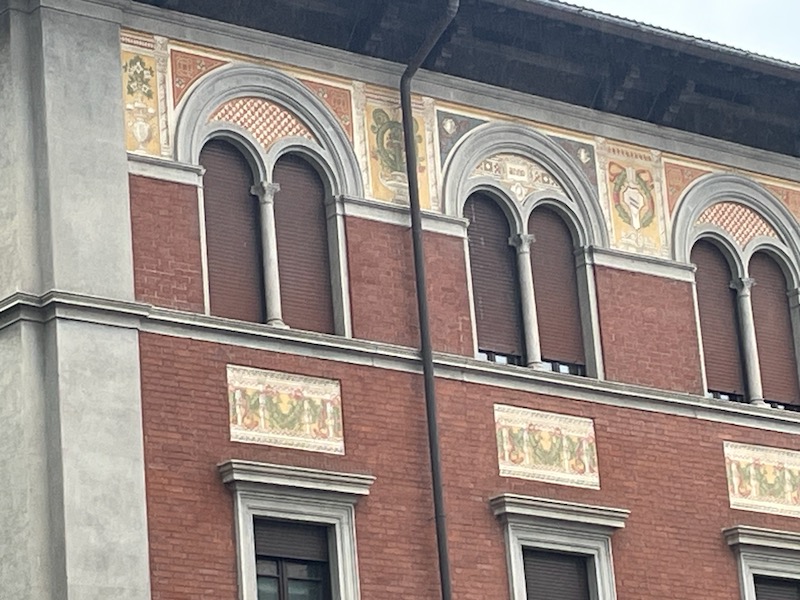Our Blog - Lombardy 2025 - Como, Italy
On the shores of Lake Como (the glamorous place where all the celebrities are seen) is the town of Como. There have been people living here since the Iron Age, originally by Celtic tribes. Pliny the Elder was born in Como in 23 AD and a lot of what we know about the ancient world is due to the writings of Pliny the Elder. I had first heard about Pliny the Elder when we were visiting Pompeii and Herculaneum, because he wrote about the eruption of Mount Vesuvius and actually died attempting to rescue a friend and her family from the eruption. Enough about Pliny and back to Como ... The Romans where here starting around the 1st century BC and after the fall of the Western Roman Empire, there were various rulers ... Goths, Byzantines, Langobards, Franks (led by Charlemagne), and various families until it became part of the unified Kingdom of Italy in 1859. A bit of trivia: Benito Mussolini, attempting to escape to Switzerland, was captured and executed by partisans in Giulino di Mezzegra, near Lake Como.
One of the main sites in town (other than the lake, which is gorgeous) is the Duomo di Como, or the Como Cathedral. The construction of this Gothic cathedral was started around 1396, when the church of Santa Maria Maggiore had become too small for the town. The work on the cathedral continued for several centuries during which the styles changed, passing from Gothic (seen in the façade with spires and pinnacles) to Renaissance. The Cathedral is also interesting because it is attached to the Palazzo del Broletto (to the left while facing the Cathedral), and then the Civic Tower on the other side of the Palazzo.
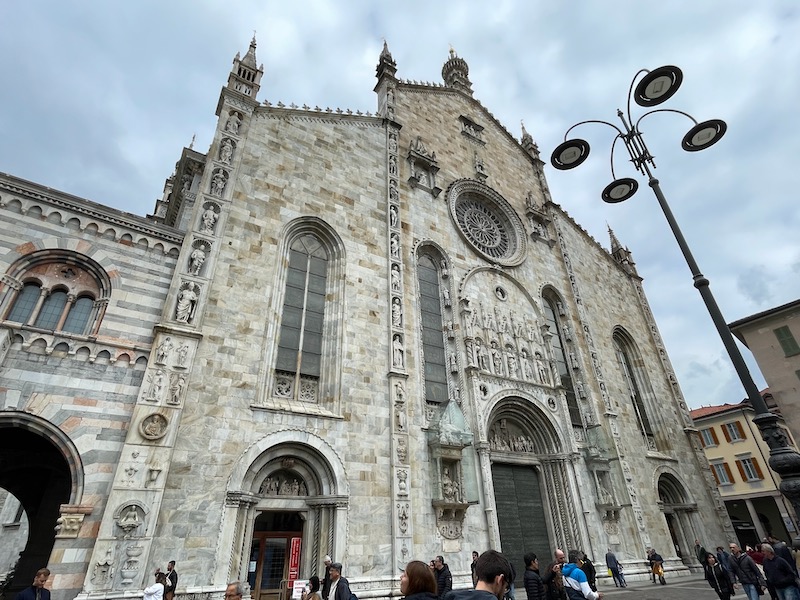
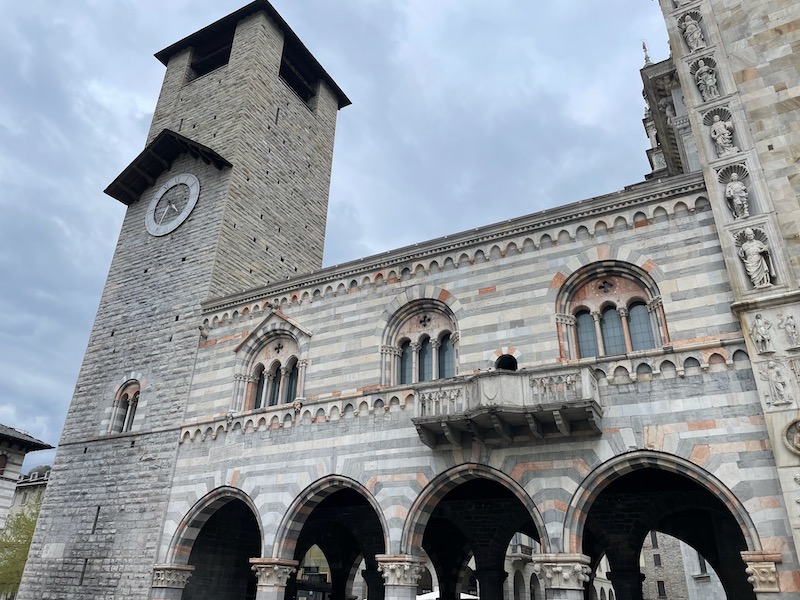
This is actually the side door (interestingly enough), called the "Frog Door". The lunette depicts the evangelical scene of the Visitation, crowned by the depictions of 7 saints.
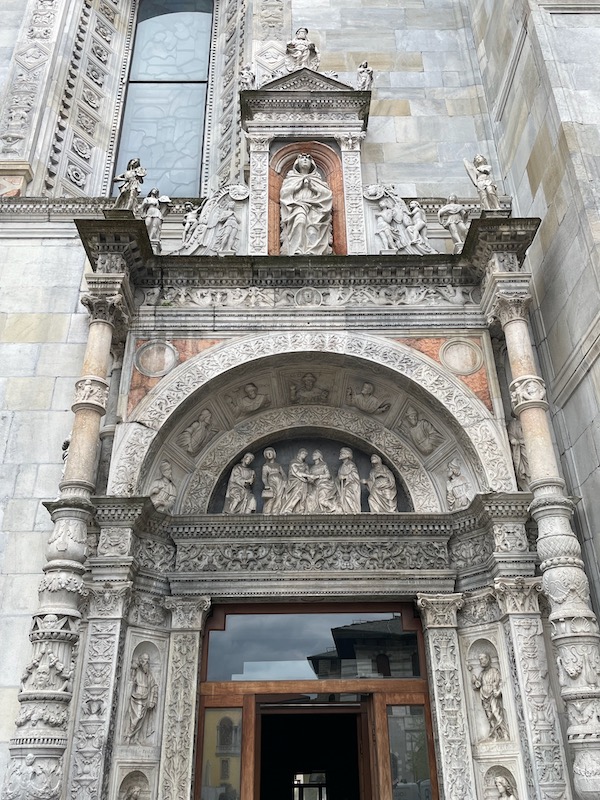
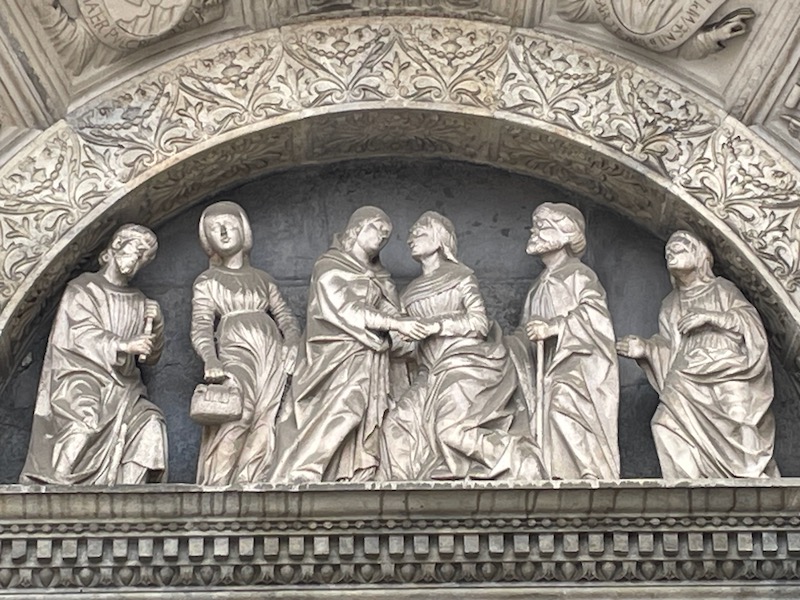
And then sculptures over the main portal depict the Adoration of the Magi. The 5 statues in the niches above the main doorway show (left to right): saint Proto, John the Baptist, the Virgin Mary, Saint Abbondio of Como, and Saint Giacinto.
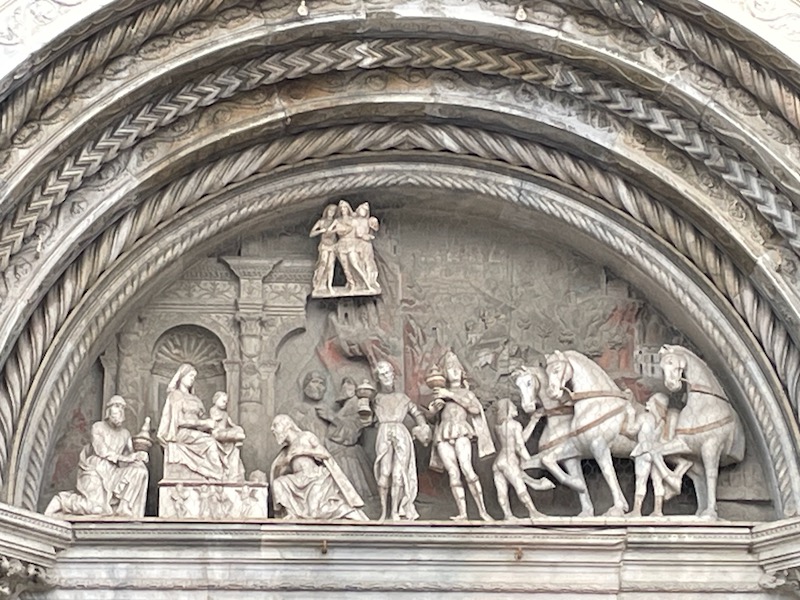
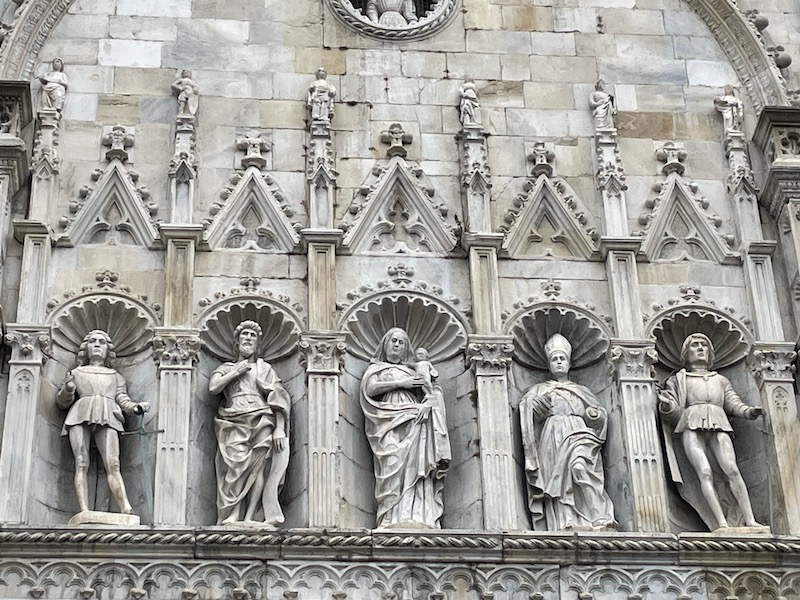
The church is designed in the shape of a Latin cross with the nave and side aisles, divided by pillars.
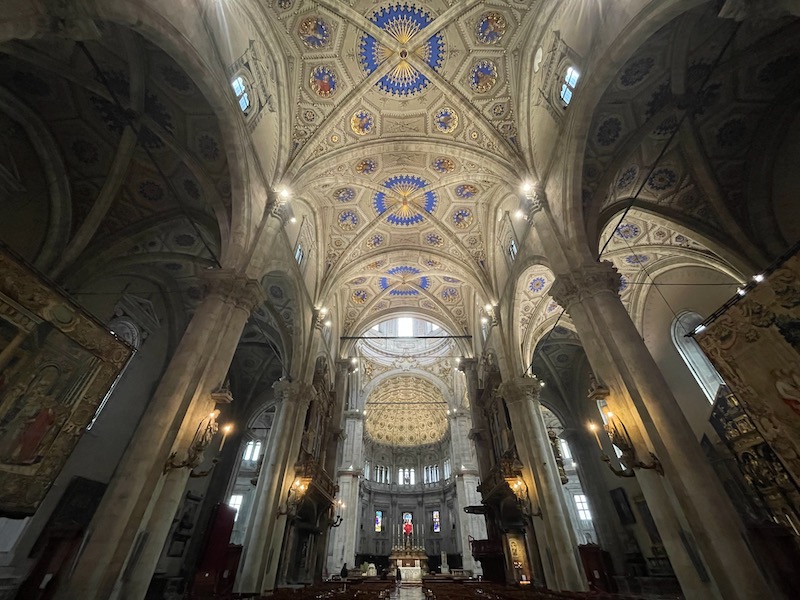
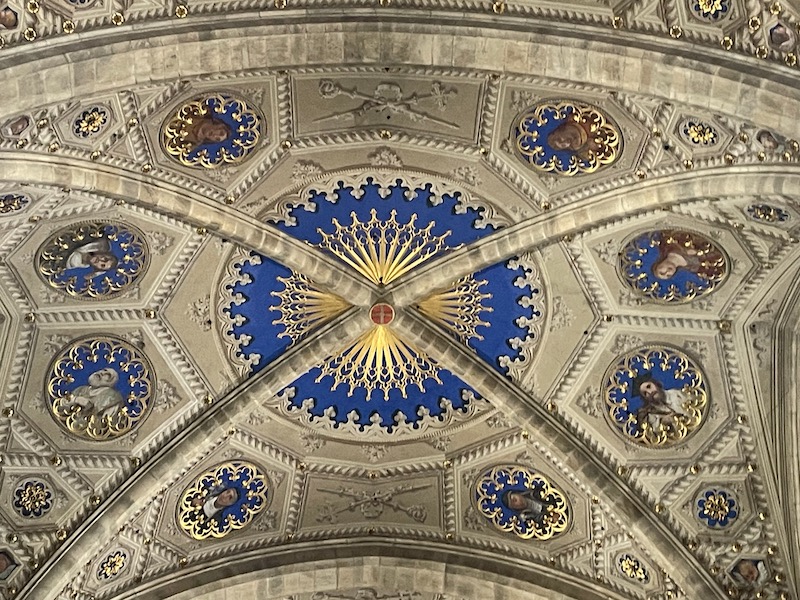
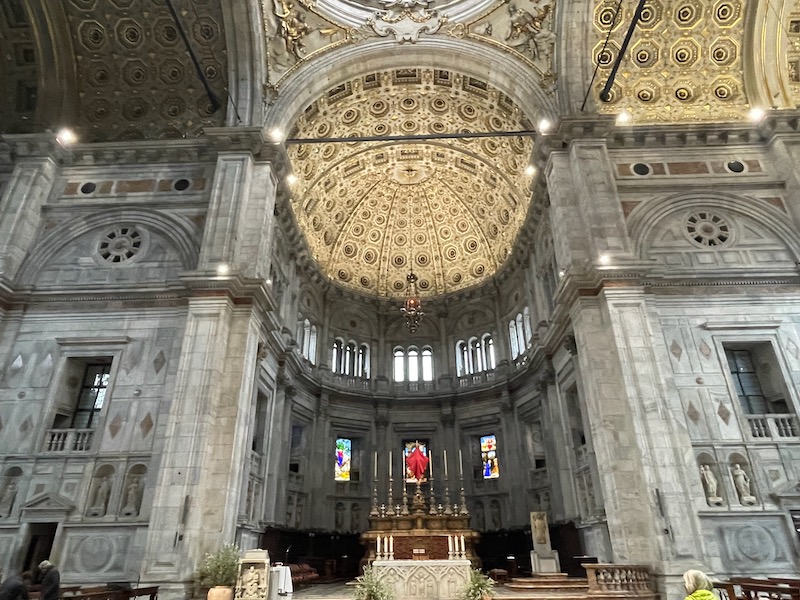
The central rose window was created in 1488 and then repaired in 1719 and again in 1851. There are several other stained-glass windows, most from the 1800's.
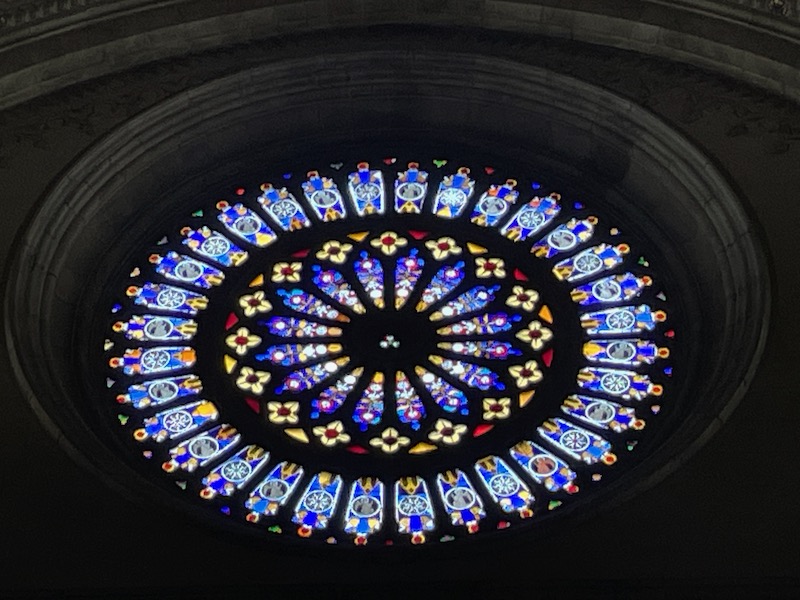
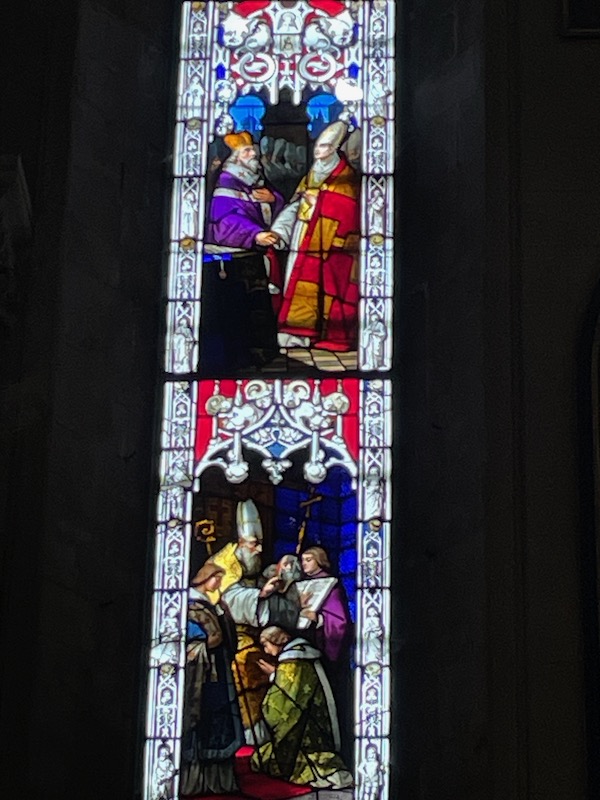
Inside are several tapestries from the 16th and 17th centuries, hanging in various places. The cathedral's tapestry collection consists of 11 tapestries, all in wool and silk, made at different dates between 1525 and 1635. I grabbed a picture of "the Transit of the Virgin", which dates 1561-1562.
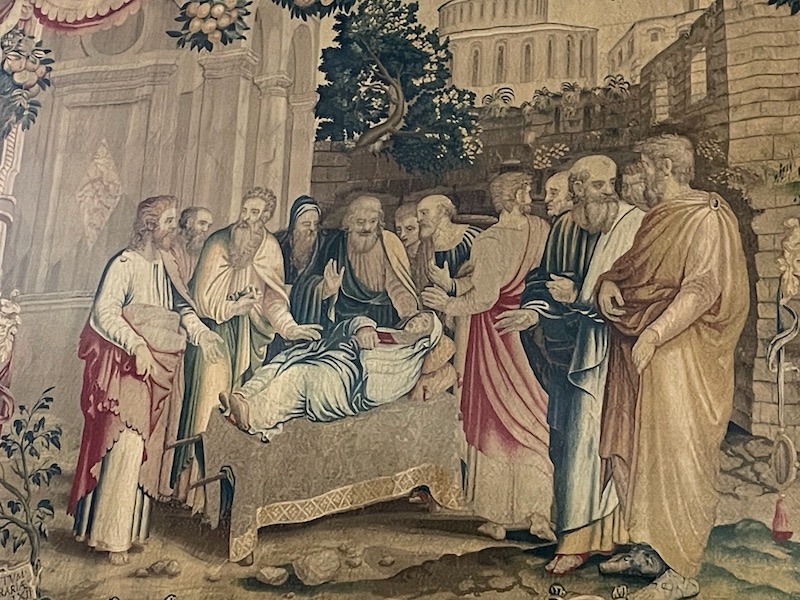
The Altarpiece of St. Ambrose is a painted marble altarpiece created in 1482, making it the oldest in the cathedral. Saint Ambrose is seen bottom-middle in the green robe, flanked by martyrs Proto and Giacinto, dressed in 15th-century clothing and holding the swords of their decapitation.
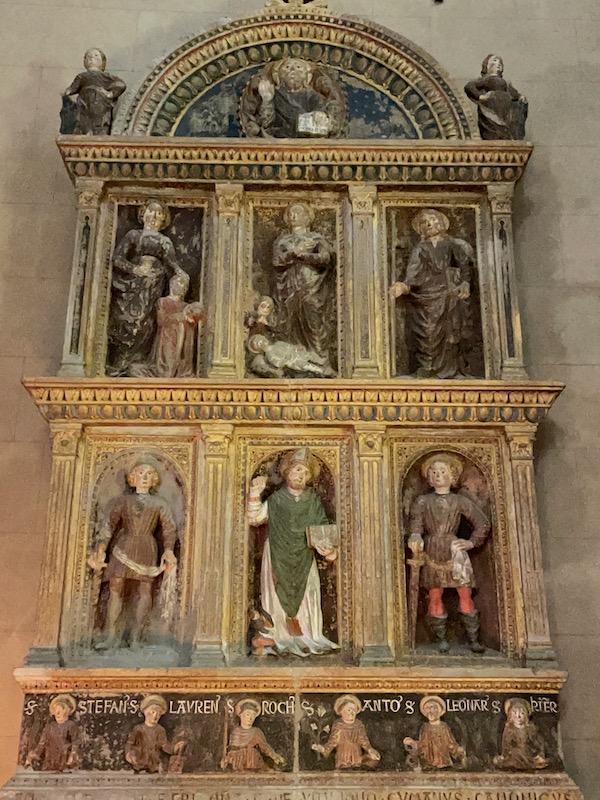
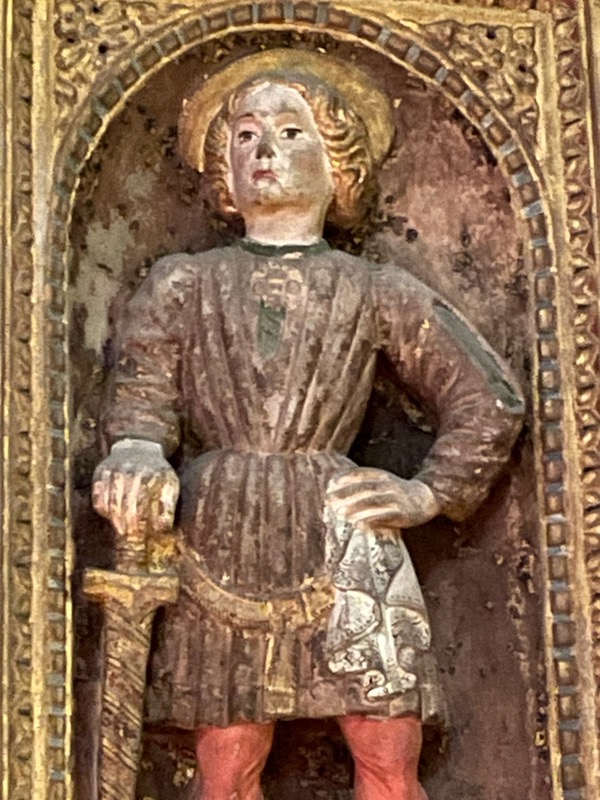
Probably the most impressive altarpiece is in the Altar of Saint Abbondio. It is a wooden sculpture created between 1509 and 1514 in the form of a triptych with 2 doors but with the central portion being the carved section. This central portion has a bottom row with the patron saint of the city, Saint Abbondio surrounded by 4 high-relief panels with scenes from his life. Above that are statues of saints, with the detailed picture showing Saint Roch, the Virgin with the Child, and Saint John the Baptist.
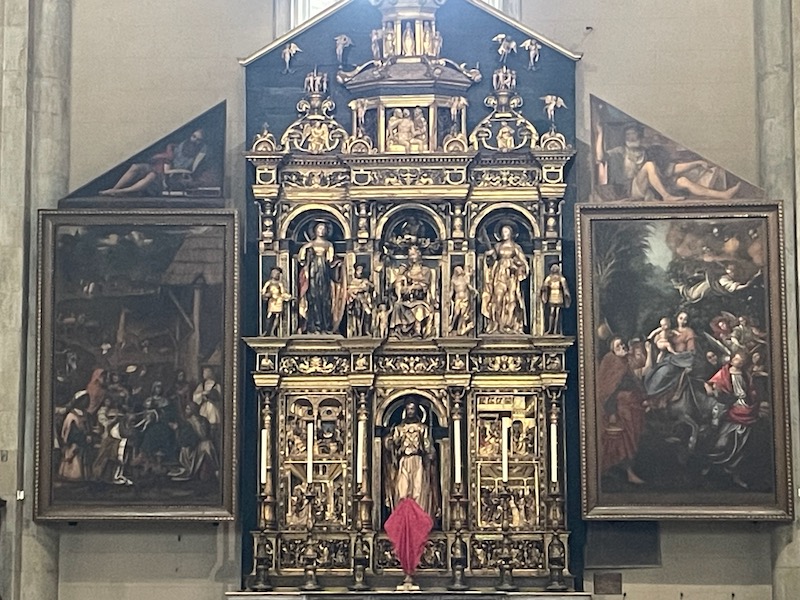
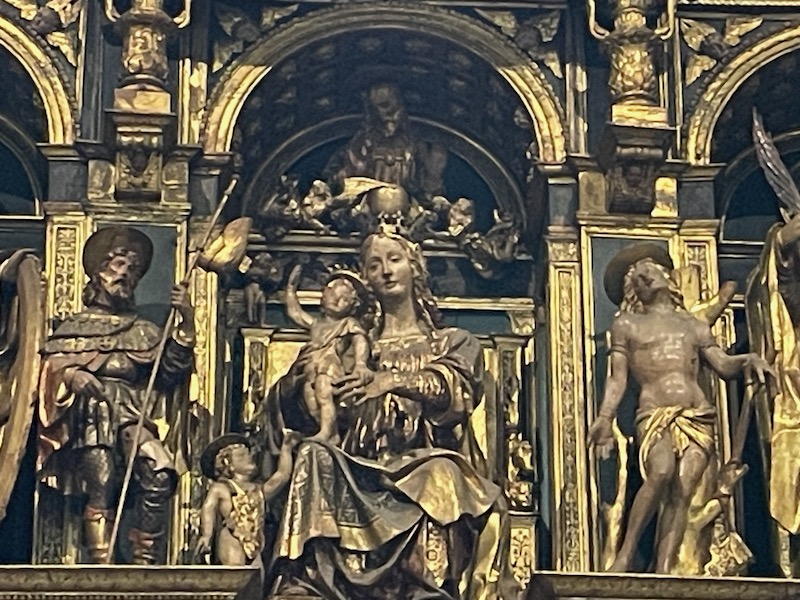
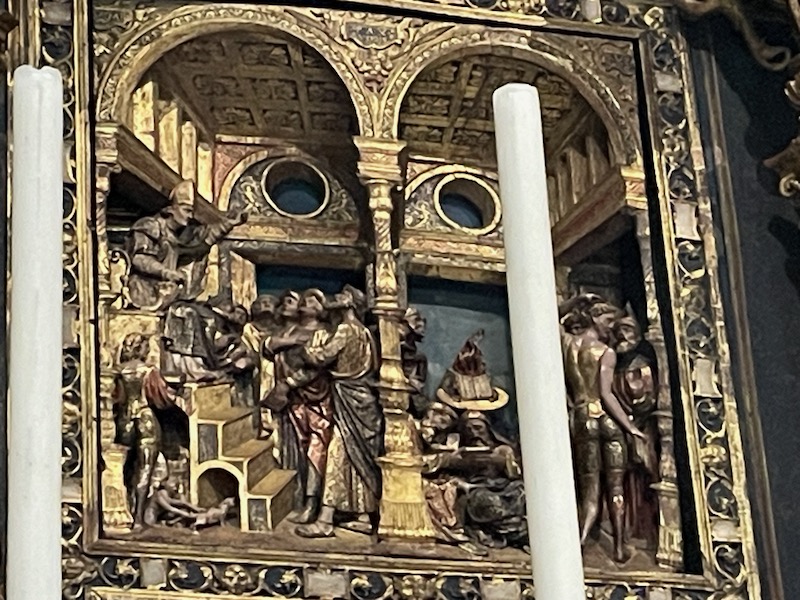
There are a few statues, this one I think is Saint Isidore the Laborer, done in marble between 1677 and 1679.
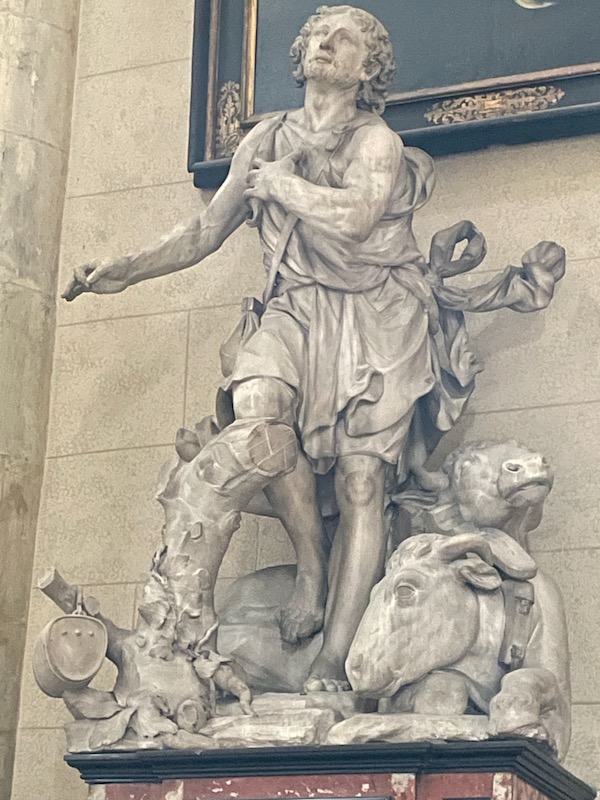
The Morazzone banner from 1608 has Saint Abbondioa on both sides in different scenes. On this side, he is in the middle with smaller medallions around the outer edge with various scenes of his life. This is somewhat a quasi-tapestry, since the main scenes are painted on canvas while the medallions were embroidered with silk, gold, and silver threads based on Morazonne's drawings.
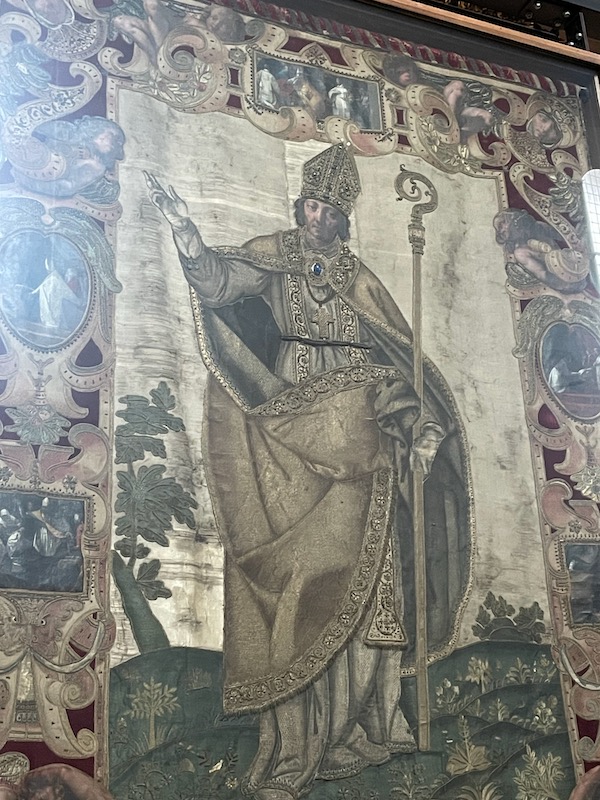
Near the central door there is also the baptismal font. The font is a 15th-century octagonal basin, decorated with a series of bas-reliefs representing the life of St. John the Baptist. The small circular colonnaded temple that encloses the font was built in 1590.
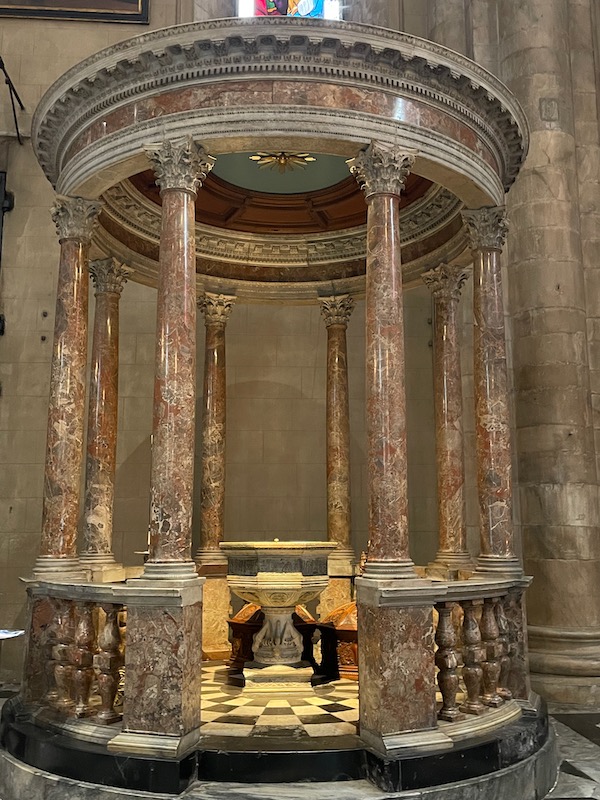
This is a 14th-century sarcophagus carved in sandstone by Campionese craftsmen. It is thought that it originally came from the Abbey of San Giovanni of Vertemate and then was preserved for over two centuries in the park of the Villa Rosales in Bernate. It is carved from a huge block of sandstone with various statues on the front, including (on the far right) Saint John the Baptist and Saint Peter.
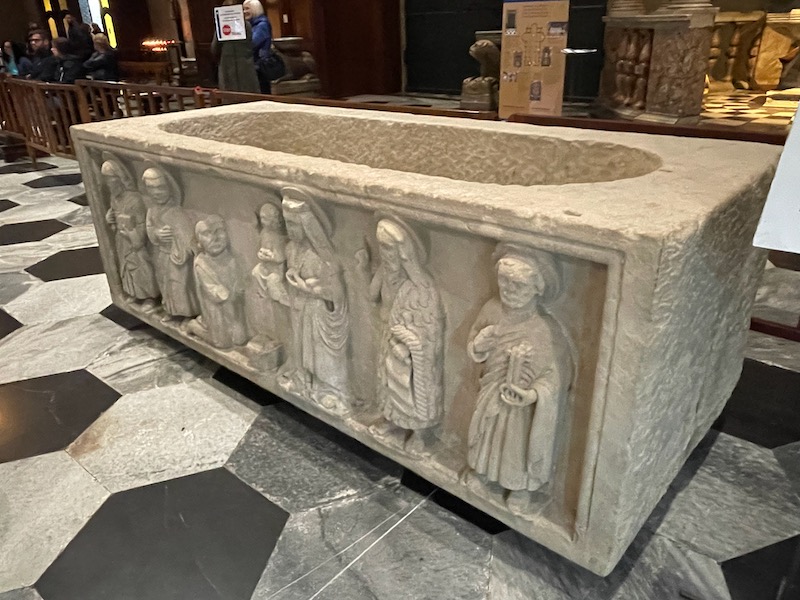
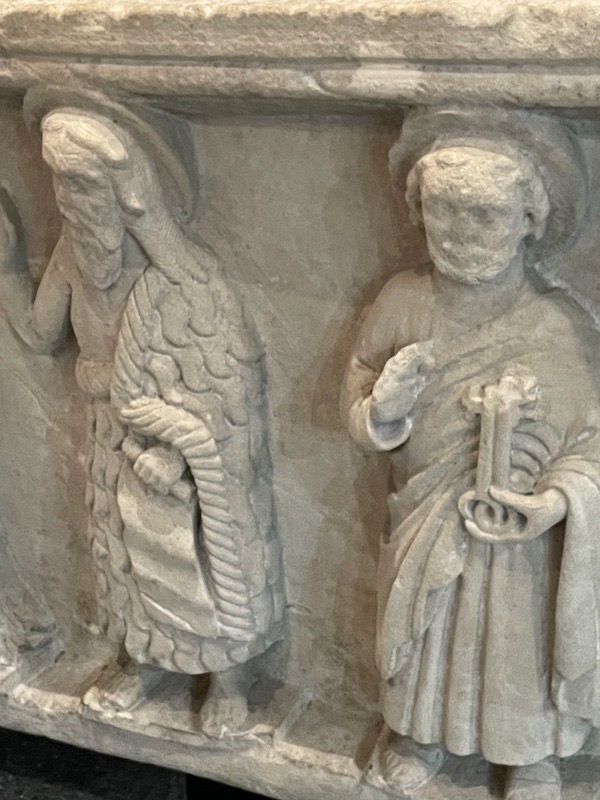
I wasn't sure how much (if anything) we would be able to see of the Terme di Como Romana (Roman Baths of Como) because the site wasn't open while we were there. But it seems that it was found when they were building a parking garage and so a good deal of the site can be seen from the walkway to the elevator. Discovered in the late 20th century, these baths date back to the 1st century AD, during the Roman occupation of the area. The complex, originally part of a larger network of public baths, served as a social and recreational center for the Roman citizens living here. The site includes remnants of the various sections typical of Roman baths, such as the frigidarium (cold room), tepidarium (warm room), and caldarium (hot room).
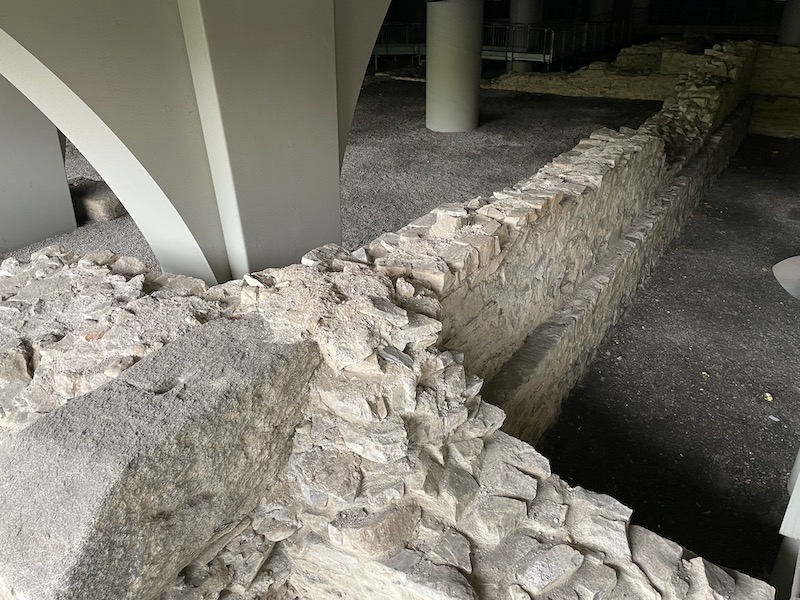
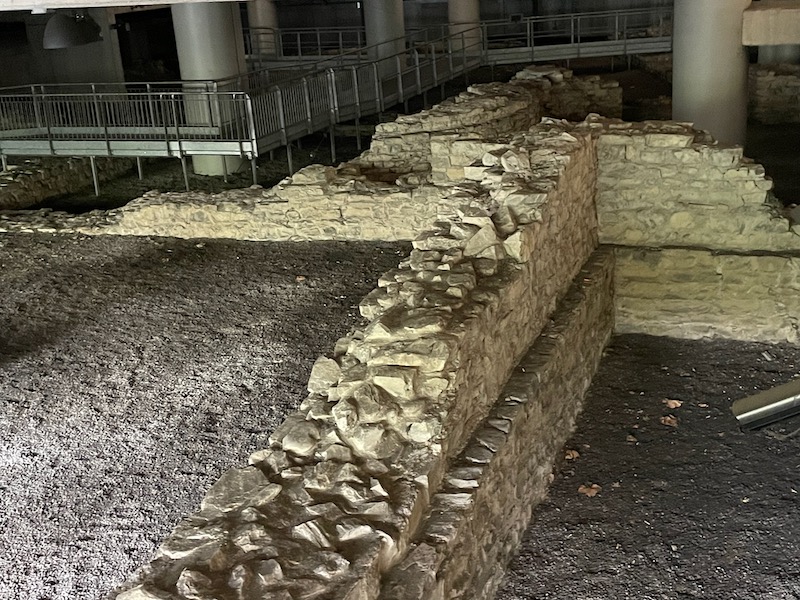
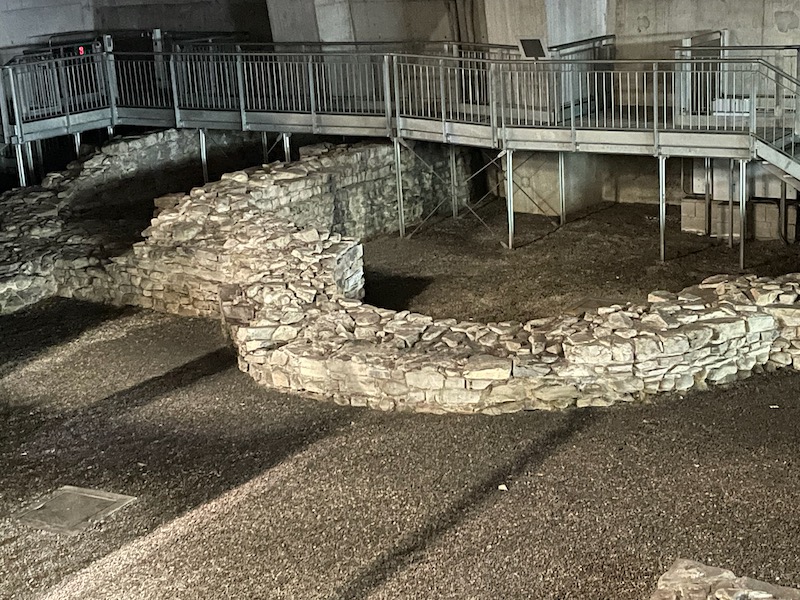
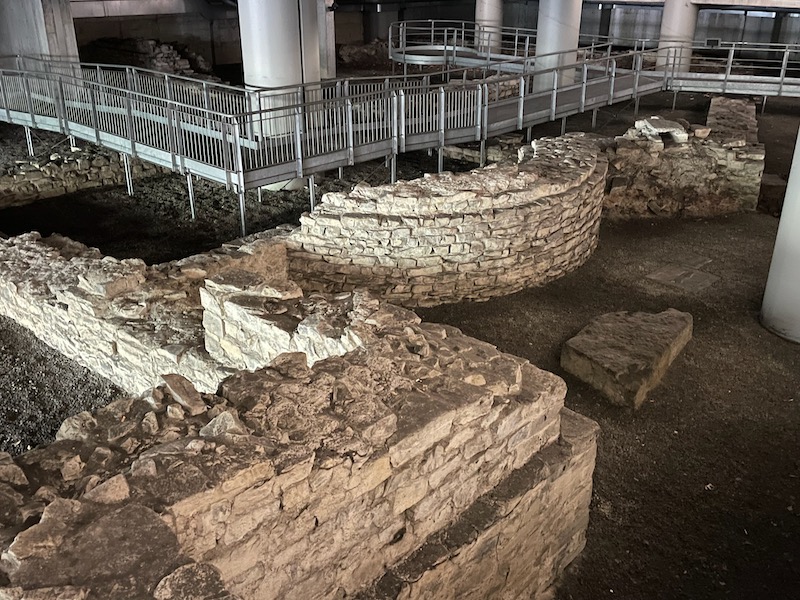
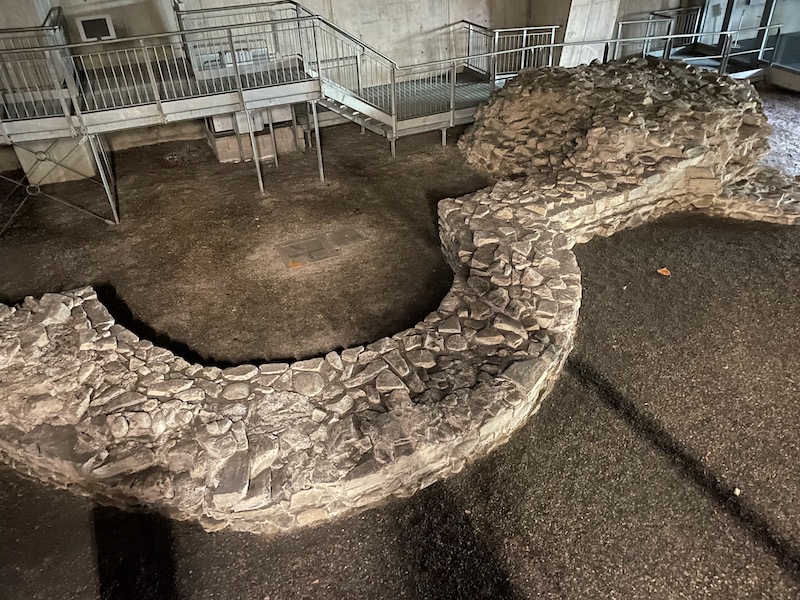
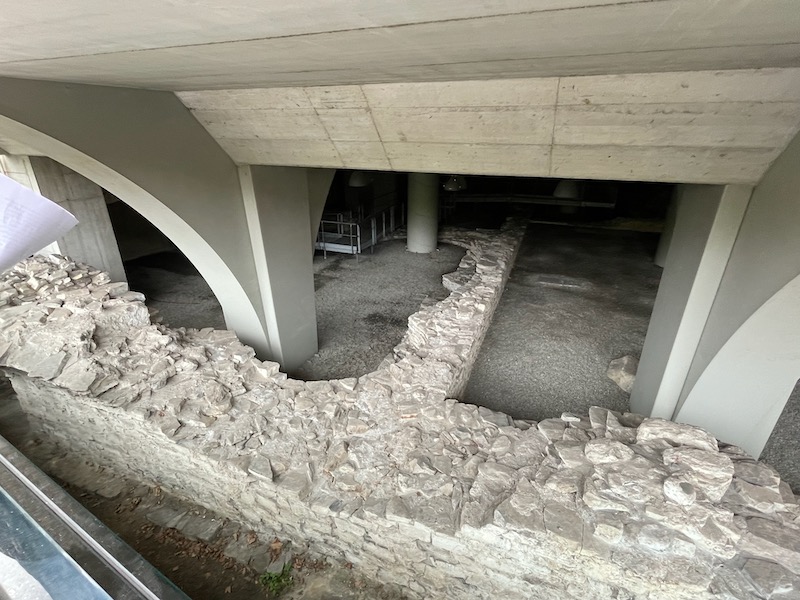
The Basilica of San Fedele dates back to 1120. The facade is in neo-Romanesque style and was restored in 1914. The lower part of the bell tower was built in 1271 with the upper part being added in 1905. It looks a bit odd from the front because it is not symmetrical. Above the door, in the lunette, is a modern mosaic depicting Jesus the Teacher, created in 1968.
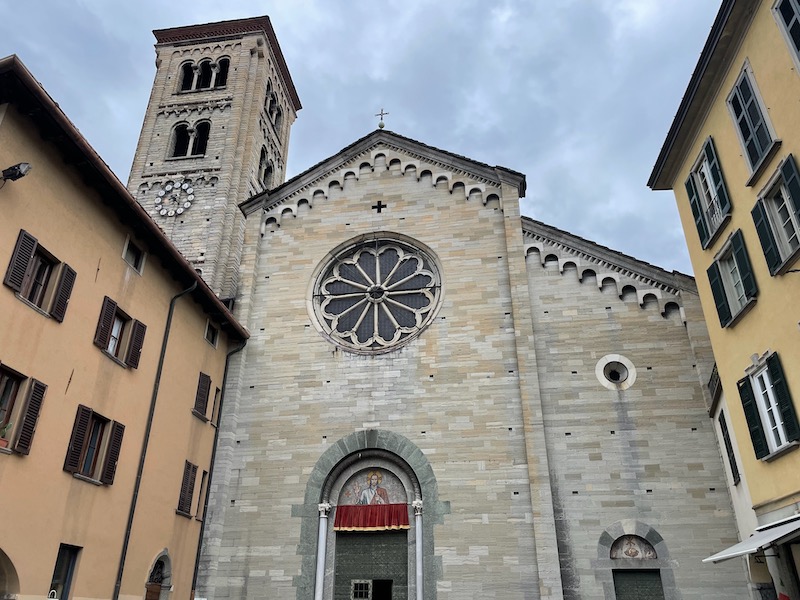
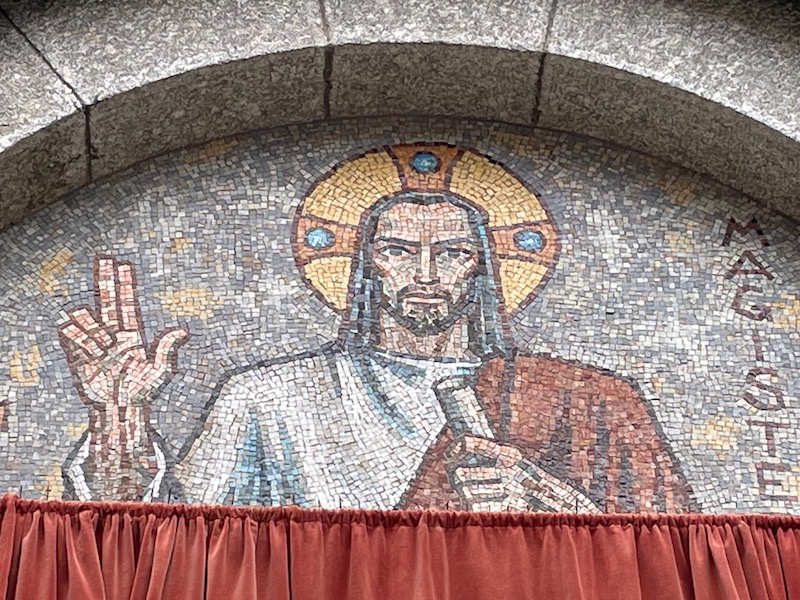
The interior of the Basilica of San Fedele has a Latin cross plan with a hall divided into three naves of four bays each with high galleries.
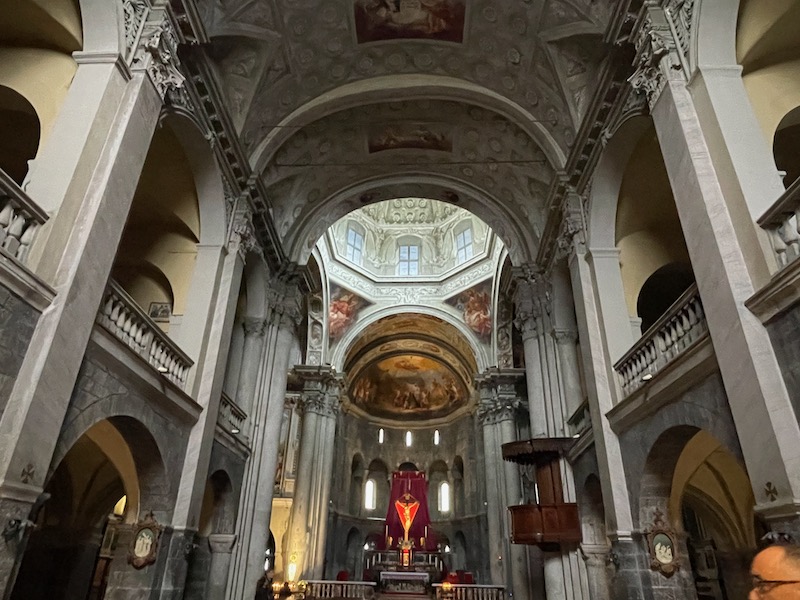
The apse walls and ceiling are completely frescoed, as are the ceilings above the altar. I've gotten pictures of a few that I thought were specifically nice.
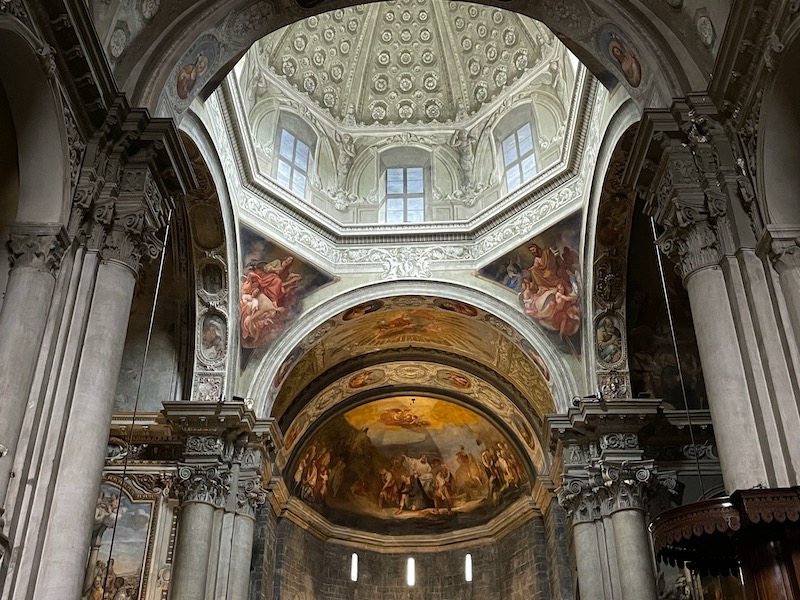
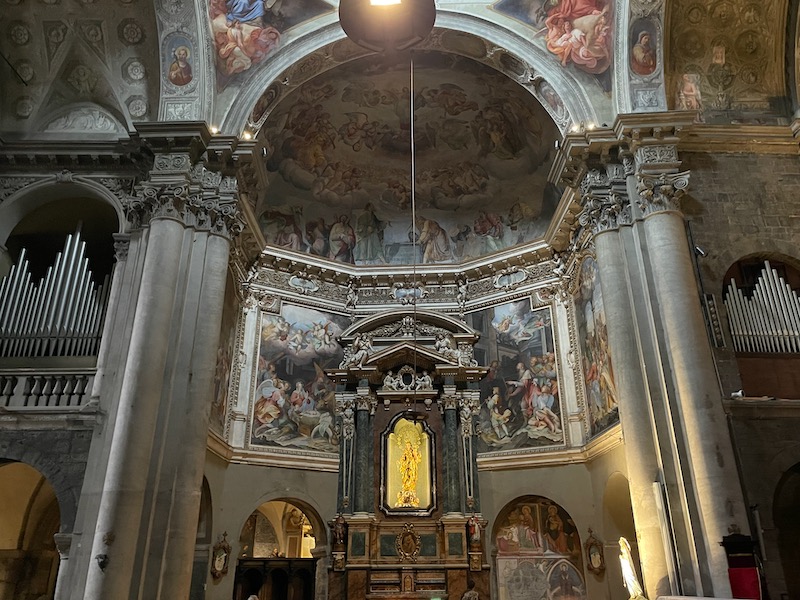
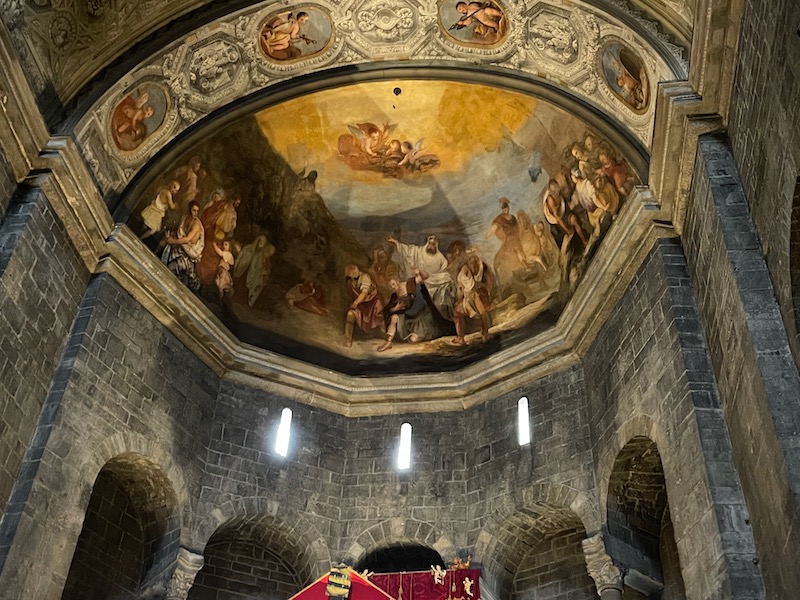
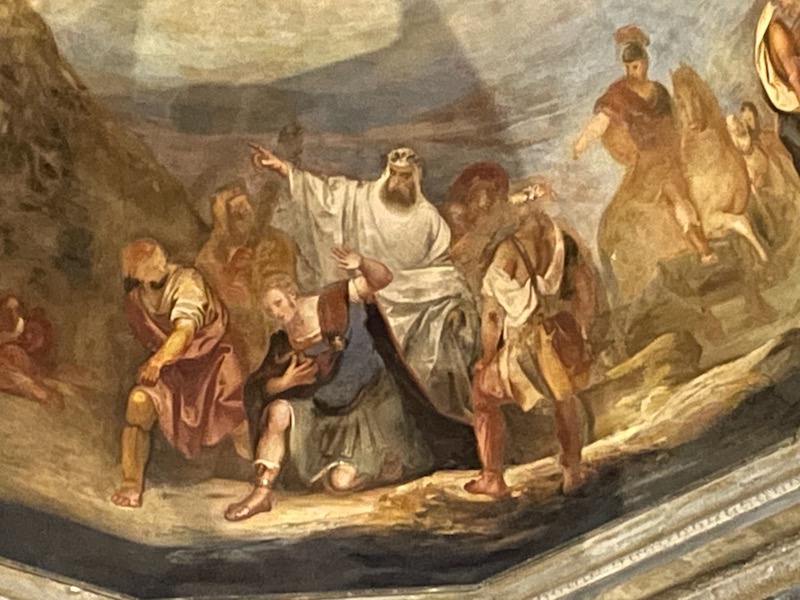
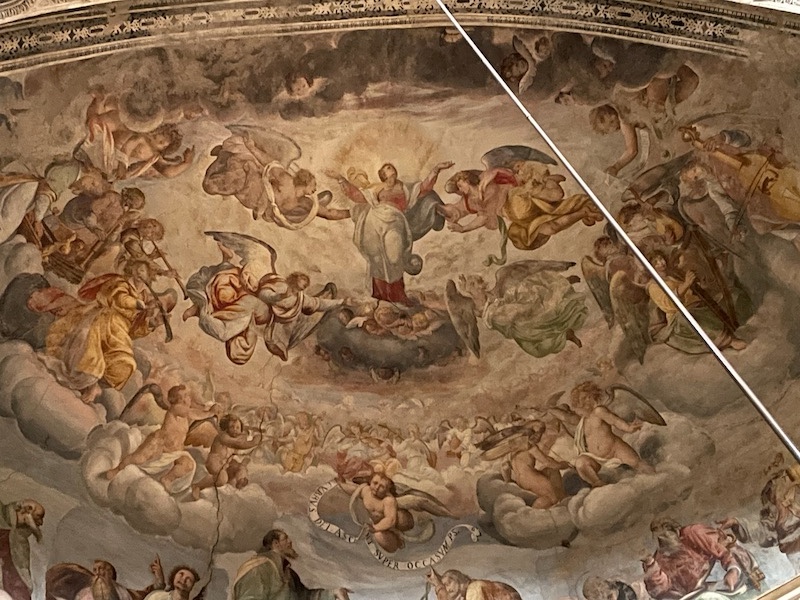
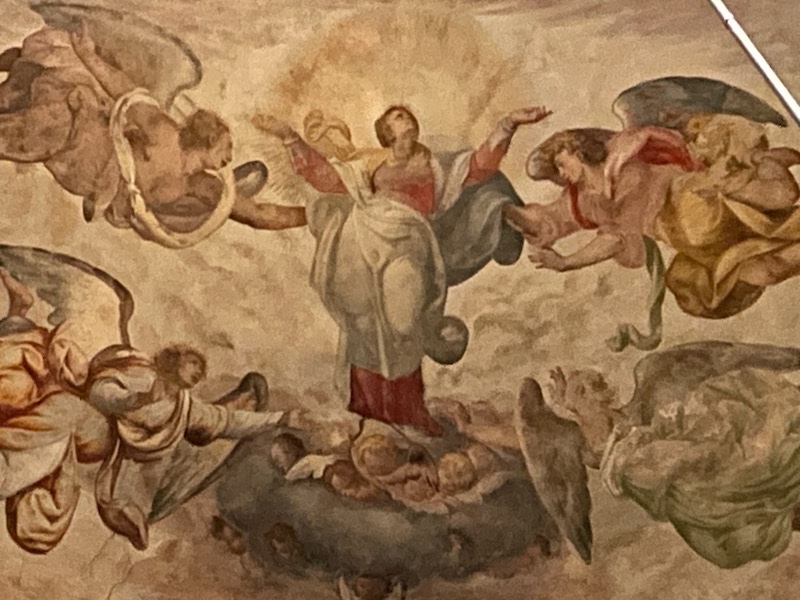 There are lots of nice artwork as well in the church, like "Madonna Enthroned with Child between Saints Sebastian and Rocco" from 1504, and an interesting painting of the Last Supper.
There are lots of nice artwork as well in the church, like "Madonna Enthroned with Child between Saints Sebastian and Rocco" from 1504, and an interesting painting of the Last Supper.
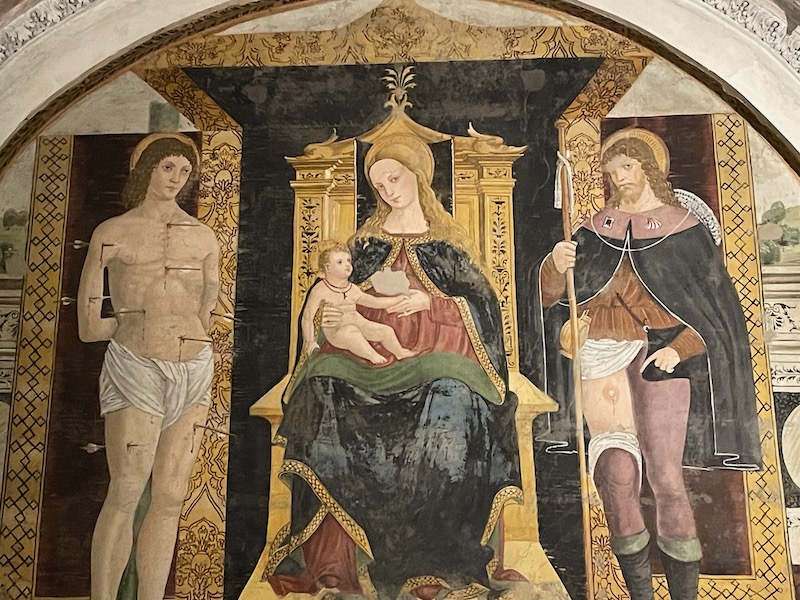
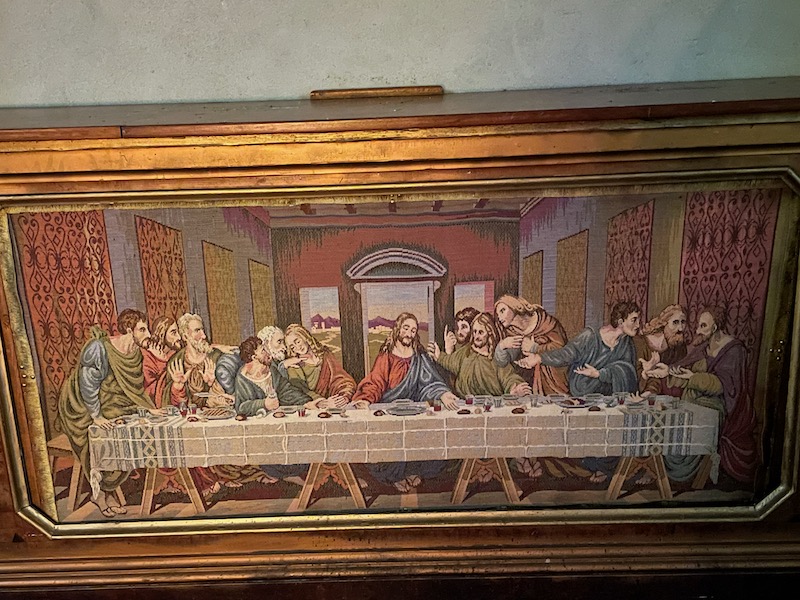
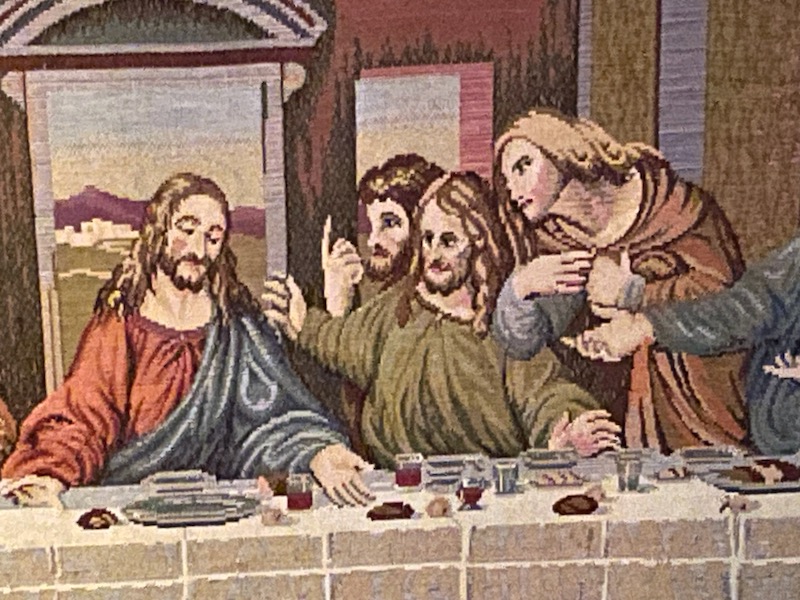
Some of the frescoes date back to the Middle Ages and some are in better shape than others.

This polychrome marble altar was the most interesting one for me, as it looks like it is decorated with various workers tools on the front (a hammer, a ladder ... )
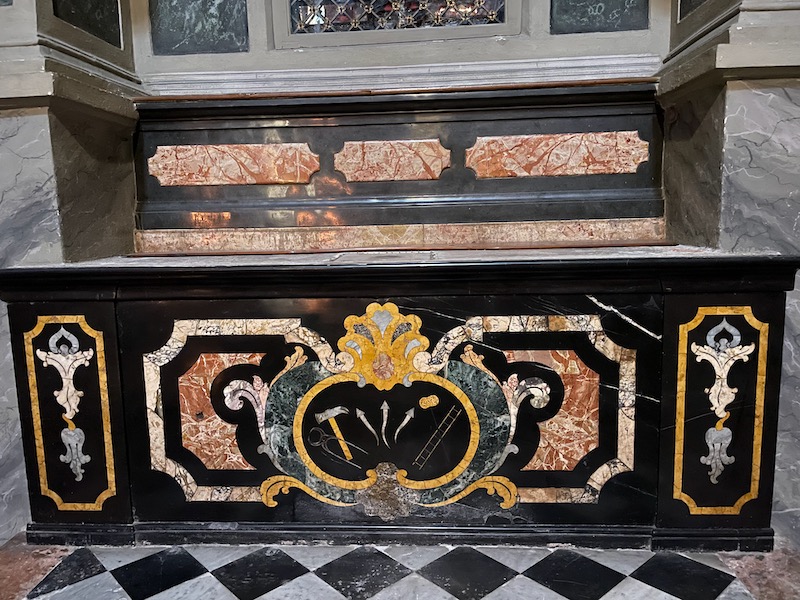
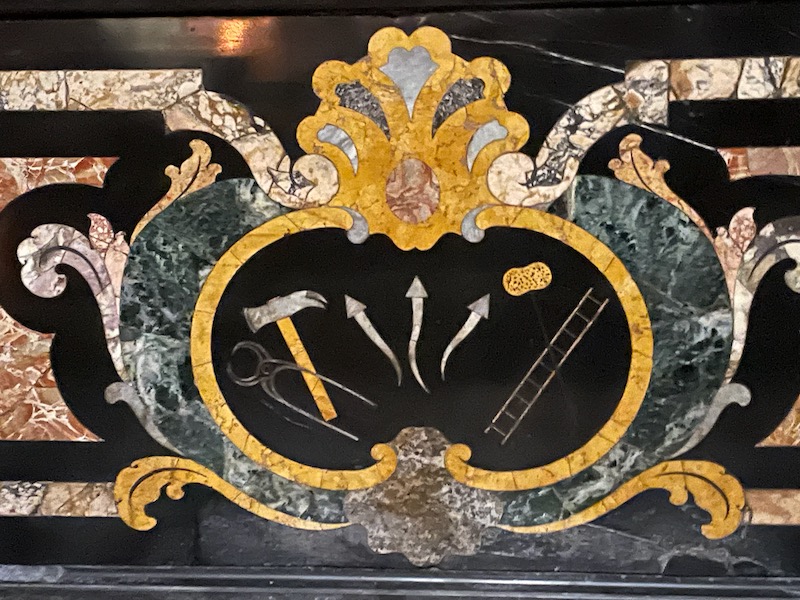
I assume this used to be where the baptismal font would have been, because the fresco on the back wall shows John the Baptist baptizing Jesus in the Jordan River, which I think dates from between the 11th and 12th centuries.
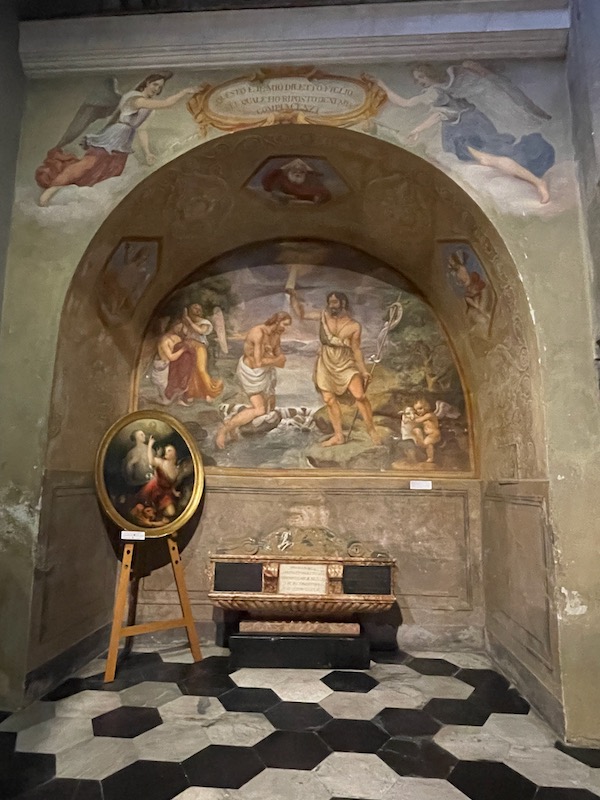
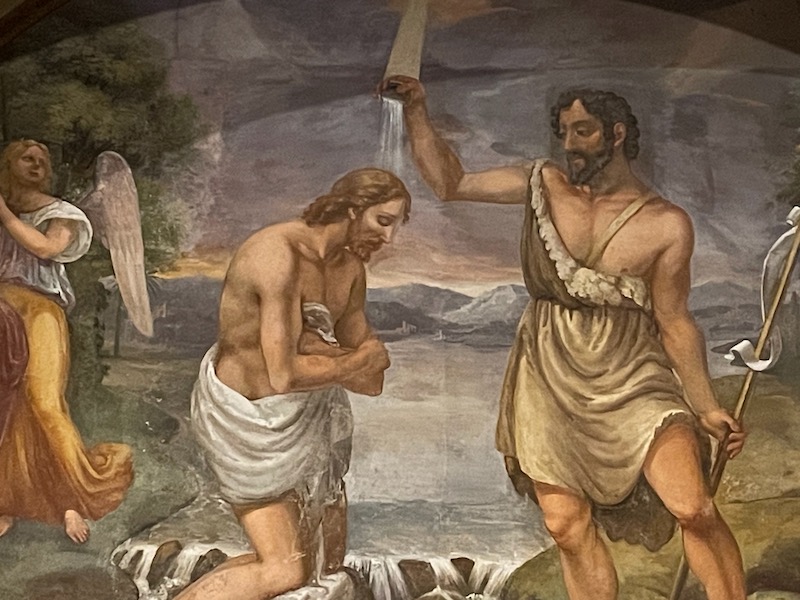
Some of the ancient walls and towers still remain, which is impressive. Some dating back to the original Roman fortifications in 51 BC, but the majority of the walls that remain were commissioned by Holy Roman Emperor Federico Barbarossa in 1158. There were modified over the years until they were preserved in 1975 in whatever state they were in at that time (which is why you can see where there used to be a gateway here that was filled in at some point).
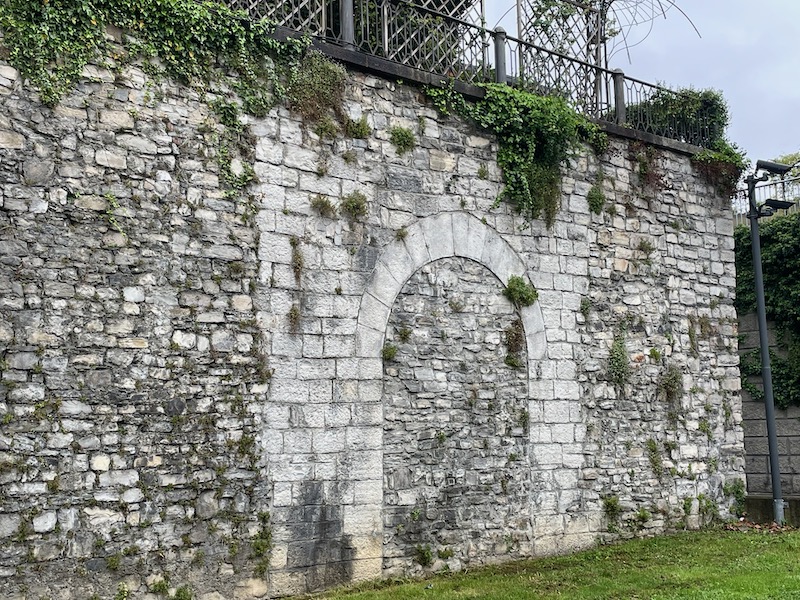
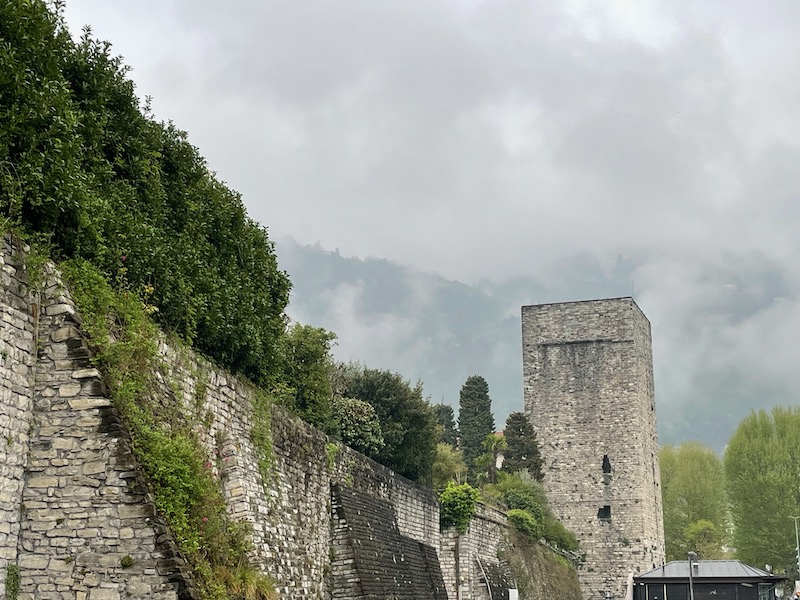
The Torre Gattoni (also named Porta Nuova), which dates to around 1192. It gets its' name from Giulio Cesare Gattoni, a Jesuit who had set up his own physics laboratory in the tower. He was a friend of Alessandro Volta (the one who invented the battery), who was able to use the physics laboratory and natural history collection he had established within the tower.
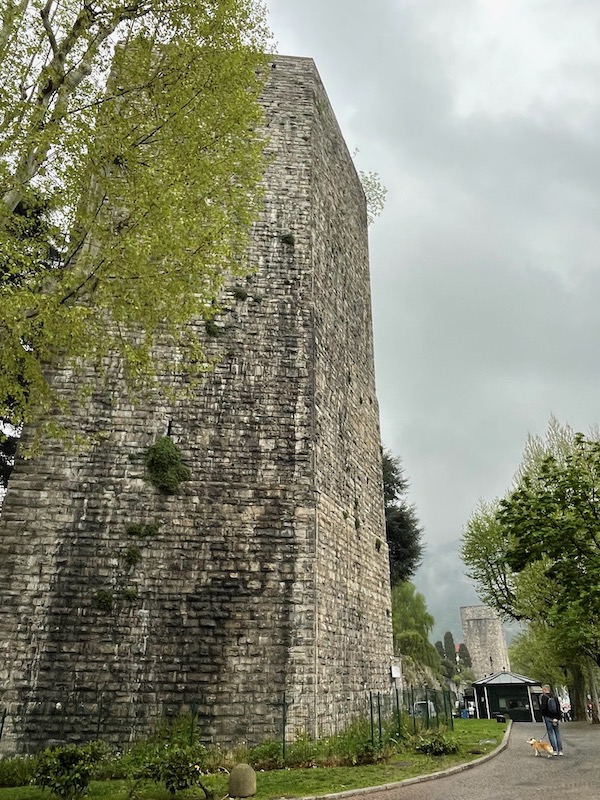
Porta Torre, or "Tower Gate", was built in 1192 as part of the city’s medieval defensive walls and is the last remaining gateway into the city from the medieval walls. This tower was built just outside of the Porta Prætoria, which was the main gateway in the Roman walls. There are supposedly some ruins of this Roman gate near this tower, but we weren't able to see them.
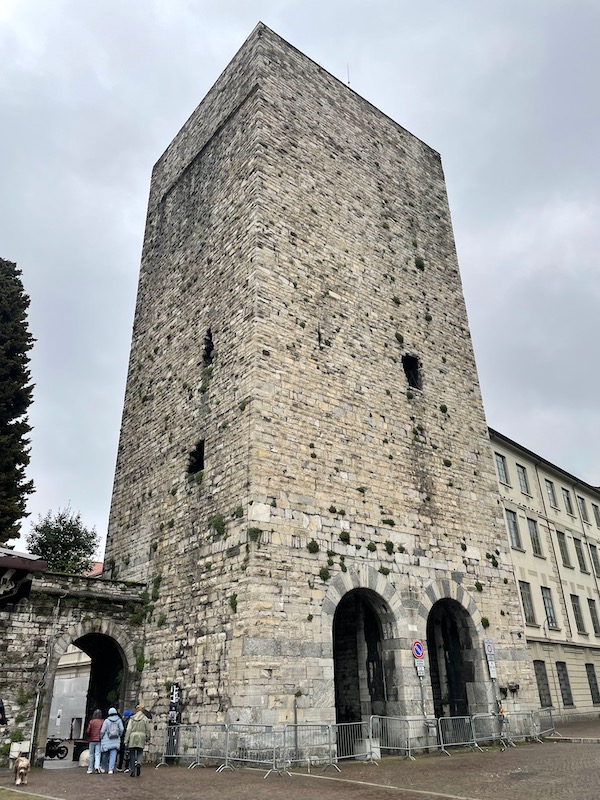
The last tower on our tour is the Saint Vitale Tower. This tall, square tower was also part of the work commissioned in 1192. This was not originally a gateway into the city but rather, a defensive tower. The arch and gateway you see here was added later during one of the many modifications to allow better access.
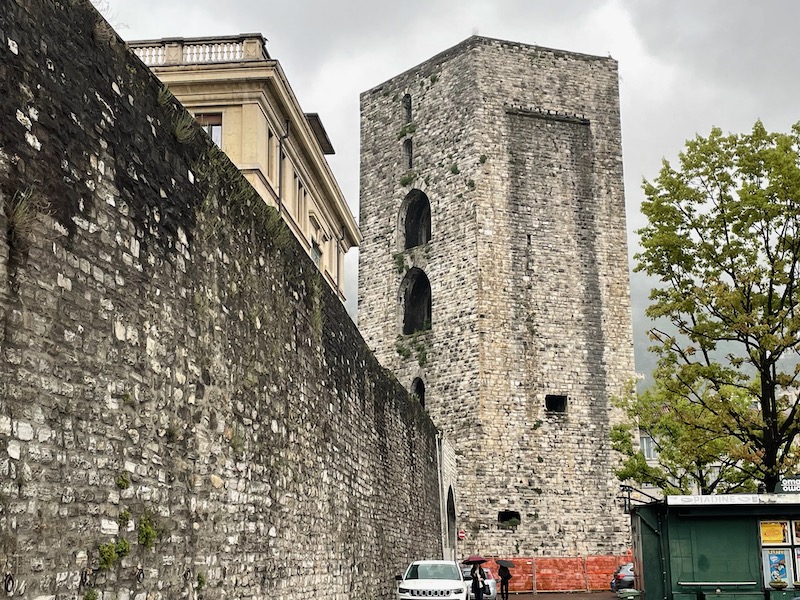
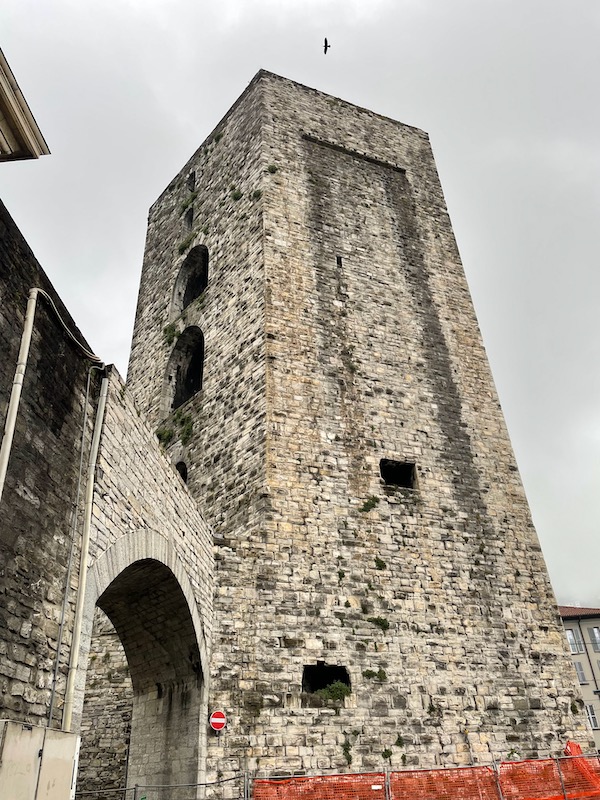
Nothing historical about this building that I am aware of but I really like what I think of as Italian architecture, especially when it has nice decor.
